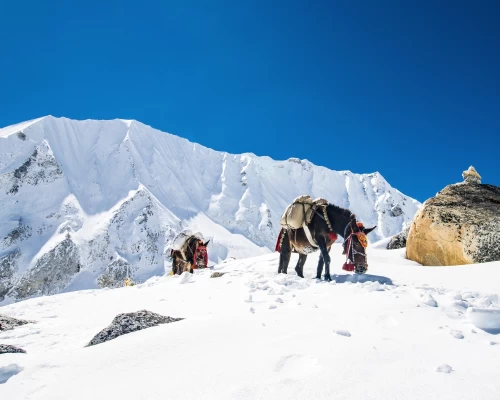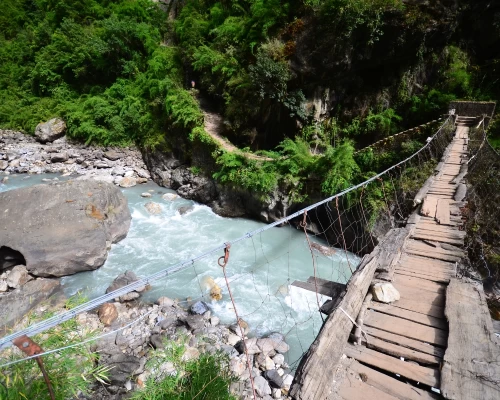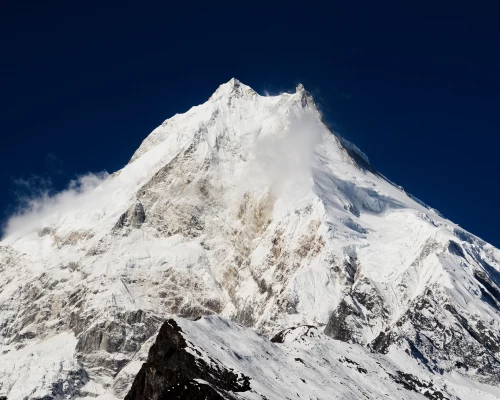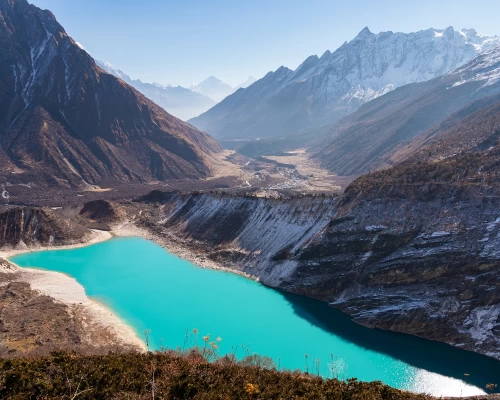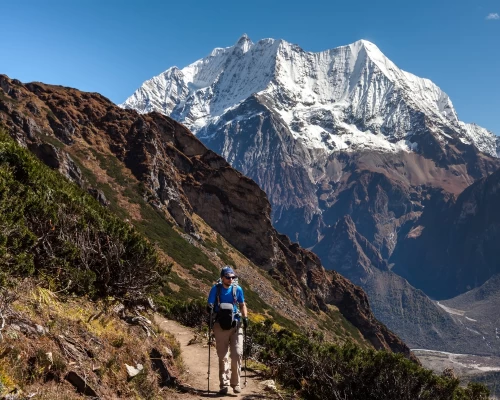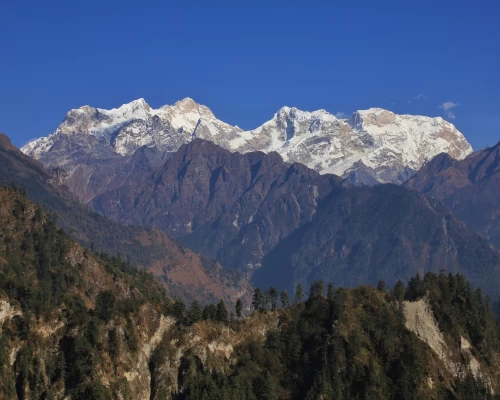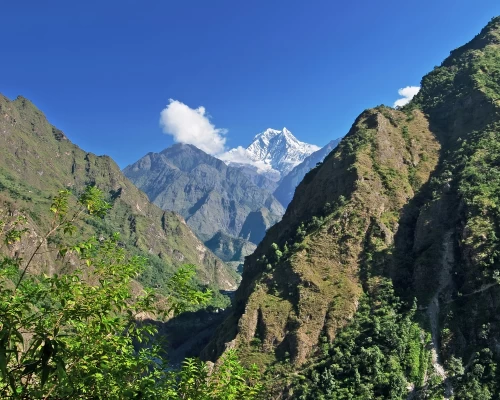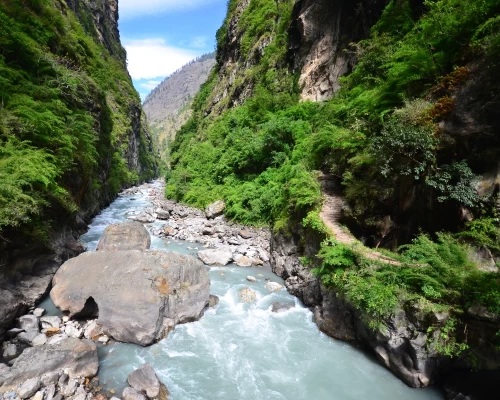- Witness the majestic beauty of the eighth-highest peak.
- Challenge yourself by crossing the iconic 5,160m Larkya La Pass.
- Immerse in local culture with Tibetan-influenced architecture and traditions.
- Trek through vibrant forests filled with diverse flora.
- Experience the high-altitude grazing lands and simple rural life.
- Relax your muscles in rejuvenating natural hot springs along the trail.
- Marvel at close-up views of ancient glaciers near the high passes.
- Trek through peaceful valleys with panoramic mountain views.
- Visit centuries-old monasteries that reflect the region's spiritual heritage.
- Enjoy uninterrupted views of the Himalayas, including peaks like Himlung and Annapurna.
The Manaslu Circuit Trek is one of Nepal's most rigorous and breathtaking adventures, carrying travelers around the beautiful Mount Manaslu, the world's eighth-highest peak. This lesser-known trail passes through isolated communities, thriving Buddhist culture, and pristine landscapes providing an authentic off-the-beaten-path experience. You will find very few routes that combine beautiful and staggering scenery of nature, unique and unseen culture, and adventure that you will be proud to complete in an immersing way.
Why Go on the Manaslu Circuit Trek?
While the Annapurna and Everest regions have long dominated the trekking scene in Nepal, the Manaslu Circuit Trek remains a hidden gem. Its appeal lies in the perfect balance of natural beauty, remoteness, and spiritual richness. Mount Manaslu (8,163 meters) is the focal point of this journey, offering trekkers close encounters with snow-capped peaks, glaciers, and high-altitude passes.
What makes the Manaslu Circuit Trek stand out is the sense of solitude and wilderness. The trail being in a restricted area sees fewer trekkers than the more popular routes, meaning you can immerse yourself deeply in the serene and untouched nature of the Himalayas. Additionally, this trek takes you through the Manaslu Conservation Area, a protected region that is rich in biodiversity. Wildlife enthusiasts will be excited to spot animals such as snow leopards, red pandas, and Himalayan blue sheep along the way.
Moreover, the trek provides access to diverse landscapes, from lush subtropical forests and terraced rice fields at the lower elevations to alpine meadows and stark, high-altitude deserts as you ascend. It’s a journey that offers immense beauty at every step.
Culture and Spirituality on the Manaslu Circuit Trek
The Manaslu Circuit Trek is not just an adventure through nature but also a deep cultural immersion. The region is inhabited by the Gurung and Tibetan-Buddhist communities, who practice an ancient way of life shaped by their spiritual beliefs and harsh mountain environment. Their unique culture and warm hospitality make the trek a deeply enriching experience.
Along the route, trekkers pass by Buddhist monasteries, prayer wheels, and chortens (stupas), all of which are integral to the lives of the people living in the Manaslu region. The Tsum Valley, which can be added as an extension to the main trek, is one of the most sacred valleys in the Himalayas. It is home to Mu Gompa, an ancient monastery where Tibetan monks live in isolation, preserving their spiritual traditions.
The presence of mani walls—stone walls engraved with prayers—acts as a constant reminder of the spirituality that pervades the region. Trekkers are encouraged to spin prayer wheels and follow the local customs, offering a deep connection to the people and their way of life.
Additionally, trekking in the shadow of Mount Manaslu holds significant spiritual meaning for the locals, as the mountain is considered sacred. The trek gives visitors a chance to observe traditional Tibetan Buddhist practices that have remained largely unchanged for centuries.
Iconic Adventure on the Trail: Crossing Larke La Pass
The highlight of the Manaslu Circuit Trek is the crossing of the Larke La Pass (5,160 meters), a challenging but thrilling feat that is the crowning achievement of the trek. Larke La offers panoramic views of snow-clad peaks such as Himlung Himal, Cheo Himal, and Kang Guru. The feeling of crossing this high pass is both exhilarating and humbling, making it one of the most memorable parts of the journey.
The ascent to the pass requires trekkers to navigate through rugged terrain, often covered in snow, making the use of trekking poles and crampons essential. The physical challenge is matched by the stark beauty of the alpine landscape—towering glaciers, sharp ridges, and vast snowfields stretch out before you.
While the crossing of Larke La is undoubtedly tough, especially given the high altitude, the reward at the top is worth every effort. Once you descend into Bimthang, the trail continues through scenic alpine meadows and forested valleys, easing the strain and providing a delightful contrast to the harshness of the pass.



